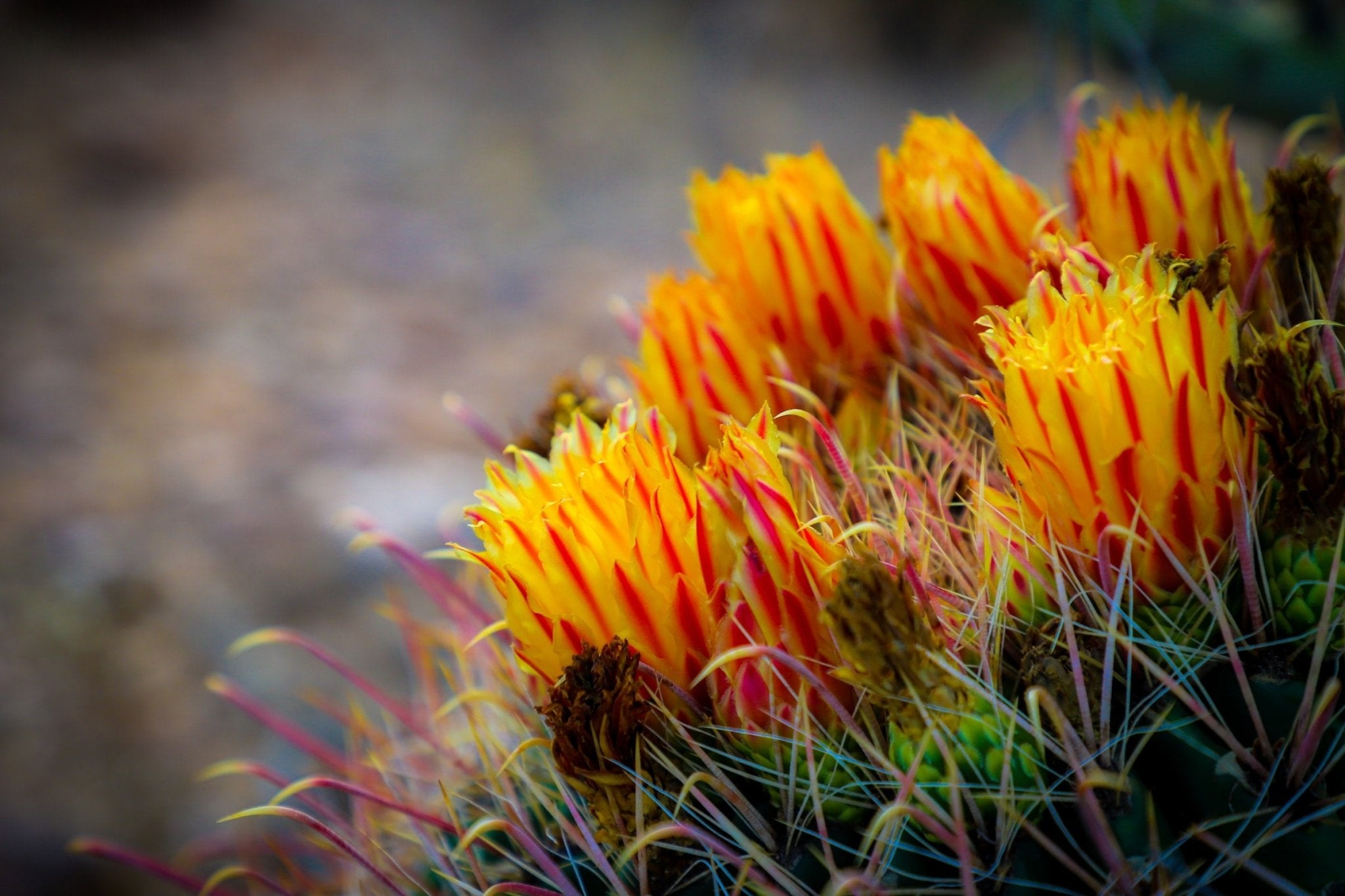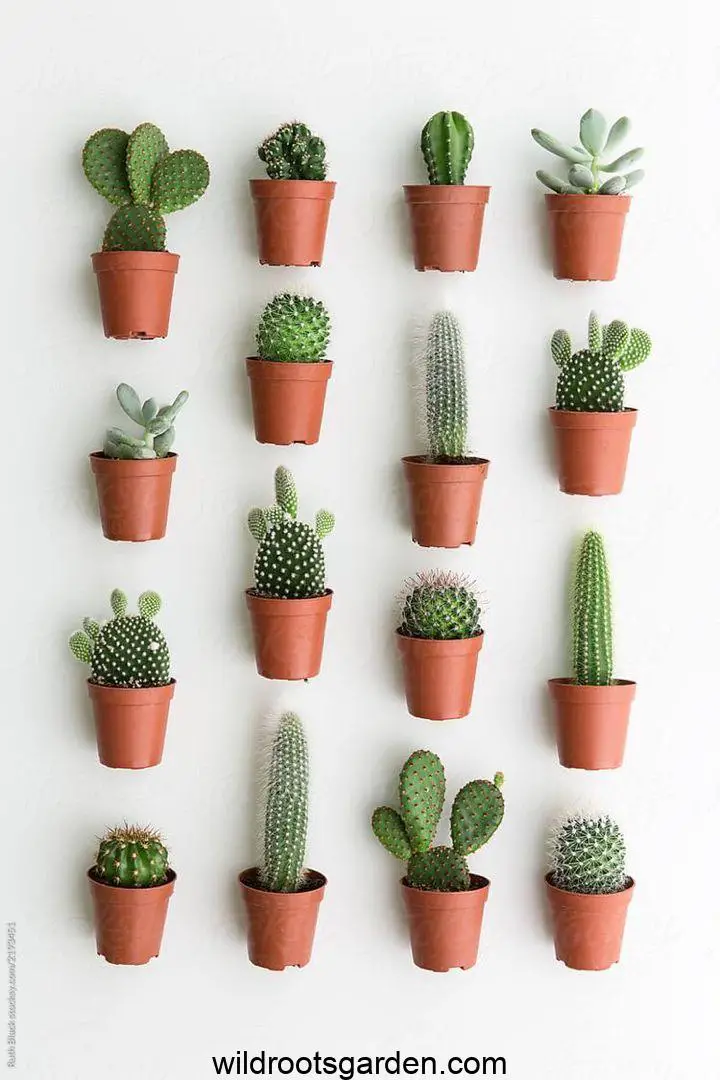Cacti can live for hundreds of years, with some species able to survive without water for months. Cacti are known for their long lifespan, with some species able to live for hundreds of years.
Their ability to store water allows them to survive in harsh desert environments, with some species capable of going without water for several months. This remarkable adaptation enables cacti to thrive in arid regions, making them resilient and long-living plants.
Understanding the factors that contribute to their longevity can help cactus enthusiasts provide the best care for these unique and enduring plants. Whether kept indoors or in their natural habitat, cacti continue to fascinate and inspire with their impressive ability to survive and thrive in challenging conditions.

Credit: varnishandvine.com
JUMP TO TOPIC
- 1 Introduction To Cactus Longevity
- 2 The Natural Habitat Of Cacti
- 3 Saguaro: The Centenarian Cactus
- 4 Common Domestic Cacti And Their Lifespan
- 5 Watering Wisdom For Cactus Care
- 6 Sunlight And Shade: A Balancing Act
- 7 Propagation And Lifespan Extension
- 8 Cacti Diseases And Lifespan Impact
- 9 The Oldest Living Cacti
- 10 Future Of Cacti: Conservation And Threats
- 11 Frequently Asked Questions
- 12 Wrap Up
Introduction To Cactus Longevity
Discover the secrets of cactus longevity and learn about the lifespan of these resilient desert plants. With proper care and ideal conditions, cacti can thrive for decades, showcasing their unique ability to adapt and survive in harsh environments.
Cacti are fascinating plants known for their ability to survive in harsh desert environments. One of the intriguing aspects of cacti is their longevity. While some cacti have relatively short lifespans, others can live for hundreds of years. In this article, we will explore the variability in lifespan among different cactus species and the factors that influence their longevity.
Lifespan Variability Among Species
When it comes to cactus longevity, there is a wide range of lifespans among different species. Some cacti, such as the Saguaro cactus, can live for hundreds of years, while others have much shorter lifespans of only a few decades. Understanding the lifespan variability among cactus species can help us appreciate the unique characteristics of each plant and their ability to adapt to their specific environments.
Factors Influencing Cactus Lifespan
Several factors influence the lifespan of cacti. These factors include:
1. Environmental Conditions: Cacti are well-adapted to survive in arid and desert regions with limited water availability. The ability of a cactus to store water in its stem and roots plays a crucial role in its longevity. Additionally, factors such as temperature, sunlight exposure, and soil conditions can also impact the lifespan of cacti.
2. Species Characteristics: Each cactus species has its own inherent characteristics that contribute to its lifespan. Some species have slower growth rates and are more resilient to harsh conditions, allowing them to live for extended periods. On the other hand, certain species may have shorter lifespans due to their growth patterns or susceptibility to diseases and pests.
3. Human Interference: Human activities, such as habitat destruction and illegal trade, can have a significant impact on the lifespan of cacti. When cacti lose their natural habitats or are subjected to overharvesting, their populations decline, ultimately affecting their longevity.
4. Care and Maintenance: Proper care and maintenance can also influence the lifespan of indoor cacti. Factors such as watering frequency, sunlight exposure, and the use of suitable fertilizers can determine how long an indoor cactus will thrive.
Understanding these factors can help cactus enthusiasts and gardeners create optimal conditions for their cacti, ensuring their longevity and overall well-being.
In conclusion, cacti exhibit a wide range of lifespans, with some species living for hundreds of years while others have shorter lifespans. Factors such as environmental conditions, species characteristics, human interference, and proper care and maintenance all play a role in determining the lifespan of cacti. By appreciating these factors, we can better understand and preserve these remarkable plants for future generations to enjoy.
The Natural Habitat Of Cacti
Cacti are adapted to live in harsh desert environments and can survive for a long time, ranging from a few years to hundreds of years depending on the species. The natural habitat of cacti includes areas with low rainfall, high temperatures, and intense sunlight, which they have adapted to through various survival mechanisms.
Cacti are well-known for their ability to thrive in harsh desert environments. These fascinating plants have adapted to survive in arid regions with limited water and extreme temperatures. Understanding the natural habitat of cacti is crucial for successfully growing and caring for them. In this section, we will explore the desert survival adaptations of cacti and how they can adapt to domestic environments.
Desert Survival Adaptations
Cacti have developed various adaptations that allow them to survive in the desert. These adaptations help them conserve water, withstand high temperatures, and protect themselves from predators. Here are some of the key adaptations of cacti:
1. Water Storage: Cacti have thick, fleshy stems that act as water storage organs. These stems can store a significant amount of water, allowing the plants to withstand long periods of drought.
2. Spines and Thorns: Cacti have evolved spines and thorns to reduce water loss and protect themselves from herbivores. These spines also provide shade and reduce the risk of sunburn.
3. Reduced Leaf Surface: Unlike most plants, cacti have minimized leaf surfaces to minimize water loss through evaporation. Instead, they perform photosynthesis through their stems, which helps them conserve water.
4. CAM Photosynthesis: Cacti use a unique form of photosynthesis called CAM (Crassulacean Acid Metabolism) that allows them to open their stomata at night to reduce water loss. They store carbon dioxide during the night and use it for photosynthesis during the day.
Cacti In Domestic Environments
While cacti are native to desert habitats, they can also thrive in domestic environments when given proper care. Here are some tips for growing cacti indoors:
1. Light Requirements: Cacti require bright, indirect sunlight to thrive. Place them near a south-facing window or provide them with artificial grow lights if natural light is limited.
2. Watering: Cacti are drought-tolerant plants and prefer infrequent watering. Allow the soil to dry out completely between waterings, and be cautious not to overwater, as this can lead to root rot.
3. Soil: Use well-draining soil specifically formulated for cacti and succulents. This type of soil allows excess water to drain away quickly, preventing waterlogged roots.
4. Temperature: Most cacti prefer warm temperatures ranging from 70°F to 90°F (21°C to 32°C). Avoid exposing them to extreme cold or drafts.
By understanding the natural habitat of cacti and their adaptations, you can create an environment that mimics their native conditions, allowing them to thrive in domestic settings. Remember to provide adequate light, water sparingly, and use well-draining soil to ensure the health and longevity of your cacti.
Saguaro: The Centenarian Cactus
The Saguaro cactus is a centenarian, capable of living for more than a few months without water. It is one of the few species of cactus that can survive for hundreds of years.
Growth Patterns Of The Saguaro
Saguaro cacti are known for their impressive size and longevity. These cacti can grow to be over 40 feet tall and live for hundreds of years. The growth of a saguaro cactus is slow but steady. In the first 10 years of its life, a saguaro cactus may only grow to be a few inches tall. However, once it reaches 30 years of age, it can grow up to a foot per year.
Water Retention And Drought Survival
One of the reasons saguaro cacti are able to live for such a long time is their ability to retain water. These cacti have a complex system of roots that can extend up to 50 feet from the base of the plant. This allows them to absorb as much water as possible during the rare occasions when it rains in the desert. Saguaro cacti can also store water in their stems, which can expand and contract depending on the amount of water available.
During periods of drought, saguaro cacti can survive by slowing down their metabolic processes. This allows them to conserve energy and water until the next rainfall. They can even go without water for several years if necessary.
Overall, saguaro cacti are truly remarkable plants that are able to survive in some of the harshest environments on Earth. Their slow growth and impressive size make them a symbol of the American Southwest, and their ability to survive droughts is an inspiration to us all.
Common Domestic Cacti And Their Lifespan
Common Domestic Cacti have varying lifespans, with some living for several decades or even centuries. The longevity of cacti largely depends on their care, environment, and species. Proper watering, sunlight exposure, and protection from extreme temperatures can help extend the lifespan of these unique plants.
When it comes to domestic cacti, understanding their lifespan is crucial. Different types of cacti have varying lifespans, with some living for decades under the right conditions.
Indoor Cacti Care Tips
- Place in a bright, sunny spot
- Water sparingly to mimic desert conditions
- Use cactus-specific fertilizer during warmer months
- Choose a stylish pot that complements its shape
Common Challenges And Solutions
- If cactus is dying from sunlight, move to a shadier spot
- Overwatering can lead to root rot, so water sparingly
- Watch out for pests like mealybugs or spider mites
Watering Wisdom For Cactus Care
When it comes to caring for cacti, watering is a critical factor. Understanding the frequency of watering and recognizing signs of overwatering and underwatering is essential for the longevity of these unique plants.
Frequency Of Watering
Cacti are adapted to arid environments and have low water requirements. It’s crucial to allow the soil to dry out completely between waterings. In general, cacti should be watered sparingly, typically every 2-4 weeks during the growing season, and even less frequently during the dormant winter months.
Signs Of Overwatering And Underwatering
Overwatering can lead to root rot and other issues, so it’s important to be vigilant for signs such as yellowing or wilting of the plant, mushy stems, or a foul odor emanating from the soil. On the other hand, underwatering may cause the cactus to shrivel, develop brown spots, or become extremely dry. Keeping an eye out for these signs is crucial for maintaining the health of your cactus.
Sunlight And Shade: A Balancing Act
Understanding the role of sunlight in a cactus’ life is crucial. Proper light exposure is vital for their growth and longevity.
Ideal Light Conditions For Cacti
- Cacti thrive in bright, indirect sunlight.
- Place them near a south-facing window for optimal light exposure.
- Rotate the cactus periodically to ensure all sides receive equal sunlight.
Effects Of Light Deprivation On Cacti
- Insufficient light leads to etiolation, causing the cactus to elongate and weaken.
- Without proper light, cacti may struggle to photosynthesize and produce energy.
- Long-term light deprivation can result in stunted growth and poor overall health.
Remember, finding the right balance between sunlight and shade is key to ensuring your cactus lives a long and healthy life.
Propagation And Lifespan Extension
Cacti have a remarkable lifespan and can live for many years, with some species surviving for hundreds of years. Proper care, including adequate sunlight, well-draining soil, and minimal watering, can help cacti thrive and extend their lifespan. Additionally, propagating cacti through offsets or cuttings can create new plants and perpetuate their presence for generations to come.
Methods For Propagating Cacti
Cacti can be propagated by seeds or cuttings. Seeds take longer to grow and require more care than cuttings. Cuttings are easier and faster to propagate. To propagate a cactus from cuttings, cut a piece of the stem and let it dry for a few days. Then, plant the cutting in well-draining soil and water it sparingly. It will take a few weeks for the cutting to root and start growing.
Does Propagation Affect Parental Lifespan?
The lifespan of a cactus depends on many factors, including its species, growing conditions, and care. Propagation does not necessarily affect the lifespan of the parent plant. However, if the parent plant is old or weak, taking cuttings may cause it to decline faster. Therefore, it is best to take cuttings from healthy and strong parent plants.
Propagation is also a way to extend the lifespan of a cactus. By propagating a cactus, you can create new plants that will carry on the genetics of the parent plant. This ensures that the genetic diversity of the species is maintained and that the plant will continue to exist for generations.
To summarize, cacti can be propagated by seeds or cuttings. Propagation does not necessarily affect the parental lifespan, but it can be used to extend the lifespan of the species. When propagating a cactus, it is important to choose a healthy and strong parent plant.
Credit: www.quora.com
Cacti Diseases And Lifespan Impact
Cacti diseases can impact the lifespan of these resilient plants, affecting how long they live. Proper care, such as avoiding overwatering and providing adequate sunlight, can help cacti thrive for many years. Regular monitoring and prompt treatment of any diseases can also contribute to a longer lifespan for your cactus.
Cacti are known for their resilience and longevity, but they are not invincible. Like any living organism, cacti are vulnerable to diseases that can significantly impact their lifespan. As a cactus owner, it’s important to be aware of common diseases that can affect your plant and take preventative measures to ensure its health and longevity. In this section, we’ll explore identifying common cactus diseases, as well as preventative measures and treatments to help your cactus thrive.
Identifying Common Cactus Diseases
Cacti can be affected by a variety of diseases, some of which are more common than others. One of the most common diseases that cacti can develop is root rot. Root rot is caused by overwatering and can lead to the rotting of the cactus’s roots, which can ultimately kill the plant. Another common disease that cacti can develop is powdery mildew. Powdery mildew is a fungal disease that can cause a white powdery substance to appear on the cactus’s leaves, stems, and flowers.
Preventative Measures And Treatments
Preventing cactus diseases is always better than treating them, as prevention can save you time, money, and the life of your cactus. Some preventative measures you can take include ensuring your cactus is planted in well-draining soil, avoiding overwatering, and keeping your cactus in a well-ventilated area. If you do notice signs of disease on your cactus, there are treatments available. For example, if your cactus has root rot, you may need to repot it in fresh soil and reduce watering. If your cactus has powdery mildew, you can use a fungicide spray to treat it.
In conclusion, understanding common cactus diseases and taking preventative measures can help ensure the longevity of your cactus. Regularly inspecting your cactus for signs of disease and taking prompt action when necessary can help keep your cactus healthy and thriving for years to come.
The Oldest Living Cacti
Discover the remarkable longevity of cacti under the subheading: The Oldest Living Cacti.
Record-holding Cacti Species
Explore the exceptional lifespans of various cactus species.
Secrets To Their Longevity
- Minimal water needs
- Adaptation to arid environments
- Slow growth rates
- Ability to store water efficiently
Future Of Cacti: Conservation And Threats
Cacti, with their remarkable ability to survive in harsh conditions, are essential to the ecosystems they inhabit. However, the future of cacti faces challenges from both natural and human-induced threats. Understanding the impact of climate change on cacti, global conservation efforts, and the threats they face is crucial for ensuring the preservation of these unique plants.
Impact Of Climate Change On Cacti
Climate change poses a significant threat to cacti populations. Rising temperatures and changing precipitation patterns can disrupt the delicate balance that allows cacti to thrive in arid environments. Additionally, extreme weather events such as droughts and storms can directly impact cacti, leading to reduced reproductive success and increased mortality rates.
Conservation Efforts Worldwide
Conservation initiatives are underway globally to protect cacti and their habitats. These efforts include establishing protected areas, implementing sustainable land management practices, and conducting research to better understand the needs of different cactus species. Collaboration among governments, conservation organizations, and local communities is essential for the success of these conservation endeavors.
Threats to Cacti:
- Habitat destruction due to urbanization and agriculture
- Illegal collection and trade of cacti
- Invasive species disrupting native cactus populations
- Climate change-induced habitat loss
Conservation Strategies:
- Establishing protected areas for cactus conservation
- Engaging local communities in sustainable land management
- Enforcing regulations to prevent illegal collection and trade
- Monitoring and managing invasive species
- Supporting research on cactus ecology and conservation

Credit: www.desertmuseum.org
Frequently Asked Questions
How Long Do Indoor Cactus Live?
Indoor cacti can live for many years, even decades, with proper care and growing conditions.
How Do You Keep Indoor Cactus Alive?
To keep indoor cactus alive, water infrequently, place in a bright, sunny spot, use cactus-specific fertilizer, and choose a stylish pot to showcase its silhouette. Avoid overwatering and provide adequate drainage to prevent root rot. Regularly inspect for pests and diseases.
Can Cactus Live For 200 Years?
Yes, some cactus species, like the Saguaro cactus, can live for more than 200 years.
Does Cactus Grow Back After Dying?
Yes, cacti can grow back after dying, but it may take a few weeks for the plant to revive. If the cactus is dying due to excess sunlight, try moving it to a shadier spot.
Wrap Up
Cacti can live for many years, with some species surviving hundreds of years. Proper care, including infrequent watering and adequate sunlight, is crucial for their longevity. Understanding the specific needs of each cactus variety is key to ensuring a healthy and thriving plant.

